Expert Tips for Cleaning Your Glass Cooktop with Baking Soda Like a Pro
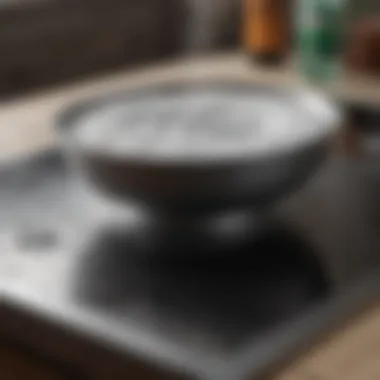
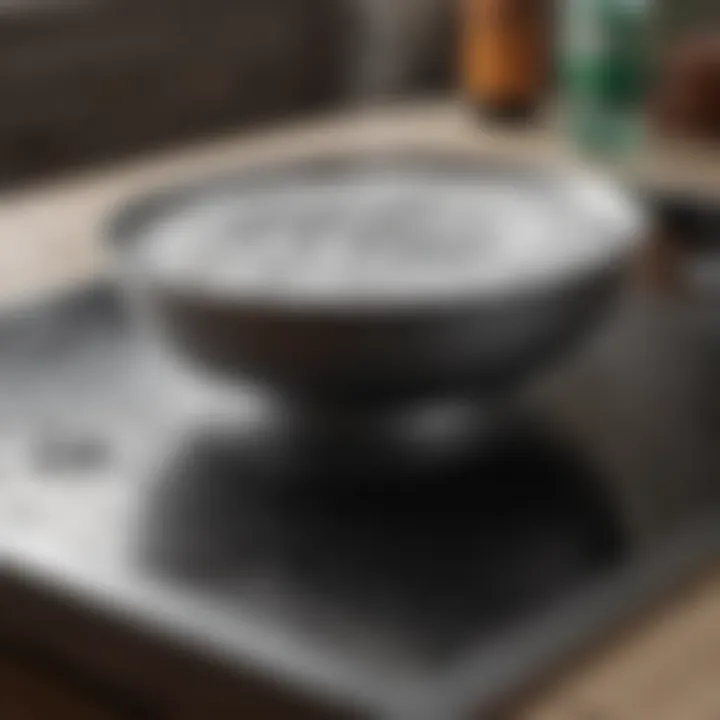
Baking soda is a versatile and affordable household staple that can work wonders when it comes to cleaning a glass cooktop. Maintaining a sparkling and spotless cooking surface is essential for both functionality and aesthetics in the kitchen. In this comprehensive guide, we will delve deep into the step-by-step process of using baking soda to effectively clean your glass cooktop. From preparation to application techniques, we've got you covered!
Preparation
Before embarking on the cleaning journey, gather all the necessary supplies. You will need baking soda, a microfiber cloth, a gentle cleaning solution, vinegar, and a scraper designed for glass surfaces. Ensure adequate ventilation in the kitchen to disperse any fumes that may arise during the cleaning process. Clear the cooktop of any loose debris or spills to make the cleaning process more efficient.
Application
To begin the cleaning process, sprinkle a generous amount of baking soda over the glass cooktop surface. The mild abrasiveness of baking soda facilitates the removal of stubborn stains and grease buildup. Using a damp microfiber cloth, gently scrub the baking soda in circular motions, focusing on areas with the most residue. For tougher stains, create a paste by mixing baking soda with water and let it sit on the affected areas for a few minutes before scrubbing.
Maintenance Tips
Once the glass cooktop is free of residue and stains, dampen a fresh microfiber cloth with vinegar and wipe down the surface to eliminate any lingering traces of baking soda. Vinegar not only acts as a natural disinfectant but also leaves behind a streak-free shine. For stubborn stains that resist the baking soda treatment, carefully use a glass scraper to gently lift off the residue without scratching the surface. Regular maintenance is key to preserving the pristine appearance of your glass cooktop.
Introduction to Glass Cooktop Cleaning
Cleaning a glass cooktop is a crucial task to maintain the hygiene and aesthetics of your kitchen. Ensuring proper maintenance not only enhances the visual appeal of your cooking area but also plays a significant role in extending the lifespan of your glass cooktop. In this detailed guide, we will delve into the essentials of cleaning a glass cooktop using the versatile and eco-friendly solution – baking soda. From understanding the significance of maintaining a hygienic cooking environment to exploring the benefits of baking soda for cleaning, this article equips you with the knowledge to achieve a spotless and gleaming cooking surface effortlessly.
Understanding the Importance of Proper Cooktop Maintenance
Cooktops are one of the most utilized appliances in any kitchen, making regular cleaning and maintenance imperative. Maintaining a hygienic cooking environment is paramount to prevent the accumulation of harmful bacteria and ensure the safety of your food preparation. By using baking soda, a non-abrasive and gentle cleaning agent, you can effectively remove stubborn stains without damaging the delicate glass surface.
When tackling grime and stains, baking soda proves to be a versatile solution, effortlessly cutting through tough grease and residue. Its environmentally friendly nature and cost-effective properties make it a top choice for eco-conscious individuals looking for sustainable cleaning alternatives.
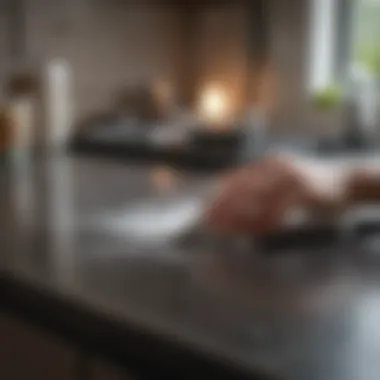
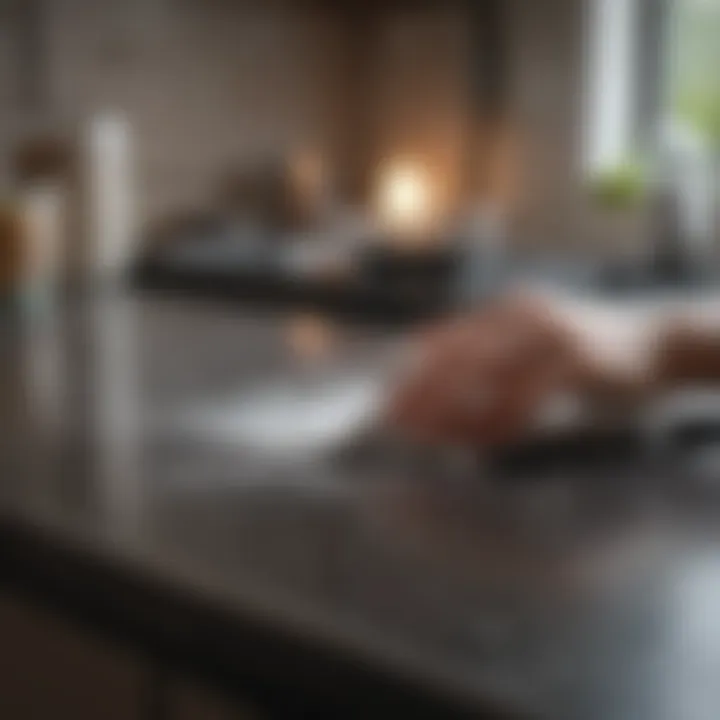
To further preserve the longevity of your glass cooktop, employing baking soda regularly not only keeps it sparkling clean but also prevents scratches and damage that could shorten its lifespan.
Benefits of Using Baking Soda for Cleaning
Baking soda stands out as an exceptional cleaning agent due to its non-abrasive qualities that are gentle on glass surfaces. This characteristic ensures that your cooktop maintains its sleek appearance without any scratches or abrasions caused by harsh chemicals.
Moreover, baking soda excels in removing tough stains and grease effectively, saving you time and effort during the cleaning process. Its abrasive nature acts as a natural exfoliant for the glass surface, leaving it radiant and free from any residues.
Furthermore, the environmentally friendly and cost-effective nature of baking soda makes it an ideal choice for individuals seeking sustainable cleaning solutions. By opting for baking soda, you contribute to reducing environmental impact while enjoying a budget-friendly approach to keeping your glass cooktop in pristine condition.
Necessary Supplies for Cleaning
When embarking on the cleaning journey, gathering essential supplies is paramount. Baking soda takes the center stage as a key ingredient, working its magic on tough stains and grime without compromising the integrity of your glass cooktop.
Additionally, dish soap complements the cleaning process by removing grease and dirt effectively. A microfiber cloth aids in gentle cleaning, preventing scratches on the glass surface while ensuring a streak-free finish.
To apply the cleaning solution seamlessly, a spray bottle filled with water proves handy in distributing the mixture evenly across the cooktop, allowing for thorough cleaning and a gleaming result.
Preparation Steps
In this article, the Preparation Steps section is an essential part of the comprehensive guide on cleaning a glass cooktop with baking soda. Prior to delving into the actual cleaning process, preparing the cooktop and gathering the required supplies are crucial steps that set the foundation for a successful cleaning routine. This segment aims to highlight the significance of meticulous preparation in ensuring an effective and efficient cleaning experience. By laying the groundwork through adequate preparation, you can enhance the outcome of your cleaning efforts and maintain the longevity of your glass cooktop.
Turning off and cooling the cooktop
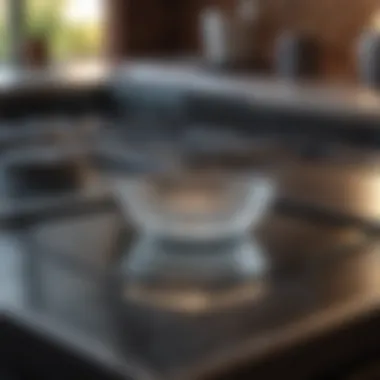
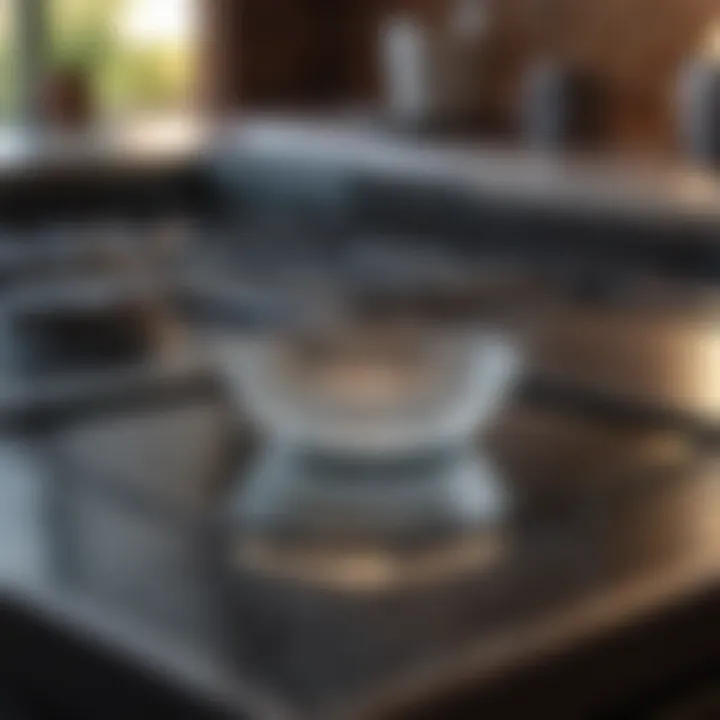
Turning off and cooling the cooktop is a critical initial step in the preparation process. By switching off the cooktop and allowing it to cool down, you create a safe environment for cleaning. This precautionary measure not only prevents any accidental burns or injuries but also ensures that the cooktop is not too hot to handle during the cleaning process. Patience is key at this stage, as allowing the cooktop to cool thoroughly sets the stage for a smooth and uninterrupted cleaning experience.
Gathering the necessary supplies
Equally important is the task of gathering the necessary supplies for cleaning. From baking soda and dish soap to a microfiber cloth and a spray bottle with water, having all the essential tools at your disposal streamlines the cleaning process. Each item serves a specific purpose, with baking soda offering a non-abrasive cleaning agent, dish soap aiding in degreasing, the microfiber cloth ensuring gentle scrubbing, and the spray bottle facilitating easy application of water. By ensuring you have all the required supplies within reach, you can approach the cleaning task efficiently and effectively.
Creating a Baking Soda Paste
Creating a baking soda paste is a pivotal step before commencing the cleaning process. The mixture of baking soda and water forms a gentle yet effective cleaning solution that helps in tackling tough stains and grease on the glass cooktop. Achieving the right consistency for the paste is essential, as it ensures optimal adherence to the surface and maximizes the cleaning potential of baking soda. By mastering the art of creating a baking soda paste, you pave the way for a thorough cleaning session that leaves your glass cooktop gleaming and free from residue.
Cleaning Process
When delving into the cleaning process of a glass cooktop with baking soda, it is essential to understand the meticulous care and attention this task requires. The application of baking soda not only ensures a spotless surface but also contributes to maintaining the longevity of your cooktop. The step where the magic truly unfolds, the cleaning process involves the gradual removal of grime, stains, and grease buildup, unveiling a pristine and gleaming cooktop surface.
Emphasizing the focal role of the cleaning process, it is paramount to note the non-abrasive nature of baking soda. Unlike harsh chemicals that can potentially damage the glass surface, baking soda offers a gentle yet effective approach to eliminating tough stains and grease. This eco-friendly and cost-effective solution not only cleans your cooktop immaculately but also safeguards its integrity for prolonged use.
Taking a closer look at the intricacies of the cleaning process, meticulous attention to detail is crucial. From applying the baking soda paste evenly across the surface to gently scrubbing away stains and grime, every step plays a pivotal role in achieving a sparkling finish. As you navigate through the cleaning process, ensure thorough coverage and consistent efforts to guarantee a thorough cleanse and rejuvenation of your glass cooktop.
Application of Baking Soda Paste
The application of the baking soda paste marks the commencement of the cleaning journey towards a pristine glass cooktop. Combining baking soda with water to form a paste creates a potent yet gentle cleansing agent that works wonders in lifting grime and tough stains.
As you prepare the baking soda paste, ensure a smooth and even consistency to facilitate optimal coverage and efficacy. Using a spatula or cloth, apply the paste to the entire surface of the cooktop, focusing on areas with stubborn residues. Allow the paste to sit for a brief period to penetrate and loosen the grime, preparing it for effortless removal.
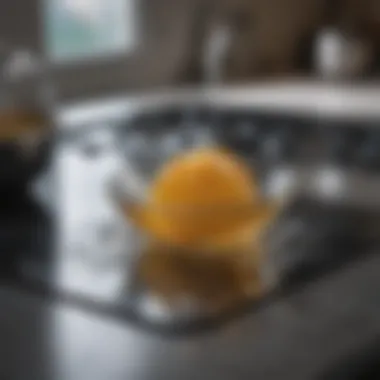
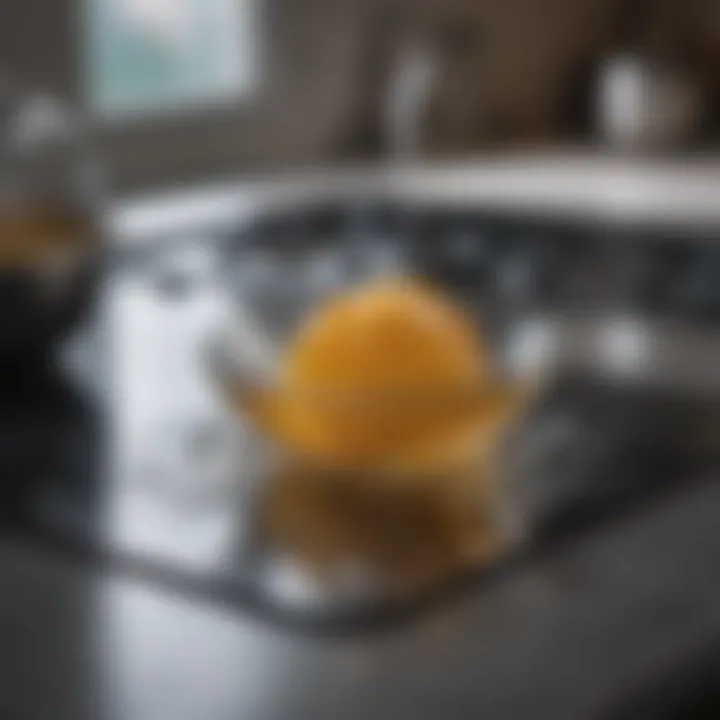
Maintaining a systematic approach during the application process is key to maximizing the benefits of the baking soda paste. By covering all areas uniformly and allowing ample time for the paste to work its magic, you set the stage for a comprehensive and thorough cleaning experience that leaves your glass cooktop sparkling and refreshed.
Scrubbing and Removing Stains
The process of scrubbing and removing stains from your glass cooktop post-baking soda paste application demands precision and care. Armed with a non-abrasive scrubbing pad or microfiber cloth, gently work on the stained areas in a circular motion to lift residues effectively.
As you engage in scrubbing, keep in mind the delicate nature of the glass surface and adjust the pressure accordingly to prevent scratches or damage. Focus on persistent stains, applying gradual pressure and repetitive motions to gradually dislodge and eliminate the blemishes. Patience and perseverance are key virtues during this phase, ensuring each stain is efficiently targeted and removed.
Following the thorough scrubbing process, a quick wipe-off with a damp microfiber cloth helps clear away loosened grime and residue. Ensure thorough coverage of the entire cooktop surface, paying particular attention to corners and edges where debris tends to accumulate. This final step sets the stage for a gleaming finish, transitioning your glass cooktop from dull and stained to radiant and spotless.
Wiping off Residue
The concluding step of wiping off residue encapsulates the meticulous attention to detail required to achieve a flawless glass cooktop surface. Using a clean and damp microfiber cloth, systematically wipe off any remnants of the baking soda paste and loosened grime, unveiling a pristine finish.
During the wiping off process, focus on thoroughness and consistency to eliminate all traces of residue effectively. Pay special attention to corners and crevices, ensuring no leftover paste or grime compromises the overall cleanliness of your cooktop. By adopting a meticulous approach in wiping off residue, you guarantee a sparkling and flawless glass cooktop that radiates freshness and elegance.
Post-Cleaning Care and Maintenance
Maintaining your glass cooktop's cleanliness post-cleaning is crucial for ensuring its longevity and pristine appearance. By implementing a few simple yet effective maintenance practices, you can minimize the accumulation of dirt and grime, preserving the beauty of your cooktop. Additionally, regular upkeep can prevent the need for intensive cleaning sessions, saving you time and effort in the long run.
Preventing Future Buildup
To prevent future buildup on your glass cooktop, it is essential to wipe it down after each use. This prevents spills and splatters from solidifying and becoming stubborn stains. Utilizing a microfiber cloth with mild dish soap can help you keep your cooktop spotless without damaging the delicate glass surface. Moreover, promptly addressing any spills or stains can prevent the need for aggressive cleaning methods that may harm your cooktop.
Regular Maintenance Tips
Incorporating regular maintenance routines into your cleaning schedule is key to preserving the elegance of your glass cooktop. Besides wiping down the surface after each use, consider using cookware with flat bottoms to prevent scratching the glass. Also, avoid sliding pots and pans across the cooktop to prevent abrasions. Additionally, periodically deep clean your cooktop by removing burner knobs and grates to access hard-to-reach areas where dirt may accumulate. By maintaining a consistent cleaning regimen, you can uphold the shine and cleanliness of your glass cooktop for years to come.
Ensuring a Lasting Shine
Achieving a lasting shine on your glass cooktop involves more than just cleaning – it requires attention to detail and the use of proper techniques. After each cleaning session, ensure that no residue or streaks are left behind by thoroughly wiping the surface with a clean and dry microfiber cloth. For stubborn stains or greasy residue, consider using a mixture of vinegar and water for a final wipe-down to restore the cooktop's natural luster. Additionally, investing in a cooktop cleaner specifically designed for glass surfaces can help maintain a glossy finish. By following these steps diligently, you can ensure that your glass cooktop glistens with a lasting shine, enhancing the overall aesthetic of your kitchen.



